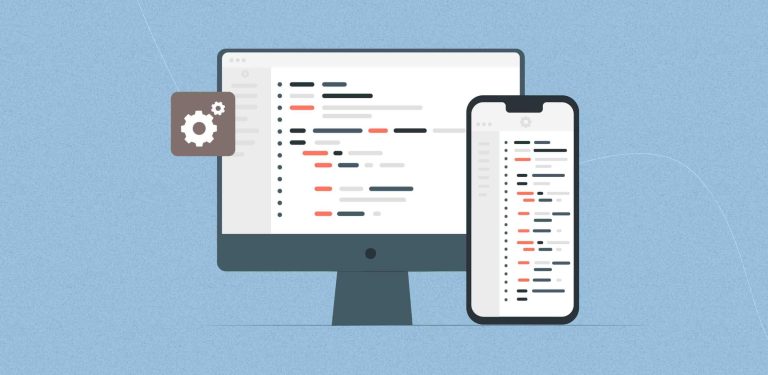


WebRTC development company services have become essential for businesses aiming to deliver seamless, real-time communication experiences in today’s fast-paced digital environment. From video conferencing and telehealth to live streaming and collaborative tools, users now expect instant, high-quality interactions across devices and platforms.
WebRTC (Web Real-Time Communication) makes this possible by enabling peer-to-peer video, voice, and data exchange directly in browsers and mobile apps—no downloads, no plugins. However, developing a feature-rich, secure, and scalable WebRTC application requires more than just integrating APIs—it demands technical expertise, strategic planning, and hands-on experience.
Choosing the right WebRTC partner isn’t just about writing code—it’s about building a communication experience your users can trust. In this guide, we’ll show you how to evaluate, compare, and select the best WebRTC development company in US for your unique goals in 2025 and beyond.
WebRTC (Web Real-Time Communication) is an open-source project originally launched by Google that revolutionized how we communicate online. It enables real-time video, voice, and data transfer directly between browsers and mobile applications, without the need for third-party plugins, downloads, or installations.
At its core, WebRTC allows developers to embed high-quality communication capabilities into web and mobile platforms, facilitating direct peer-to-peer connections using a standardized set of APIs. With built-in support in all major browsers—Google Chrome, Safari, Firefox, Microsoft Edge—and compatibility with iOS and Android, WebRTC has become the go-to protocol for real-time communication development across the globe.
But in 2025, WebRTC isn’t just another tool—it’s a critical technology powering modern, responsive digital experiences.
As the demand for instant, remote, and seamless communication continues to grow, WebRTC has positioned itself as an irreplaceable foundation for modern applications. Here’s why forward-thinking businesses and startups are prioritizing WebRTC app development:
Powering Remote Work and Collaboration Tools
The shift to hybrid and remote work is no longer a temporary trend—it’s a permanent evolution in how businesses operate. Teams need secure and responsive tools to connect across time zones in real time. WebRTC makes it possible to build apps that support:
By leveraging a WebRTC development company, businesses can build proprietary solutions that rival Zoom, Microsoft Teams, or Slack, without compromising on customization or data ownership.
Fueling Growth in Telehealth and eLearning
From virtual medical consultations to online classrooms, WebRTC powers two of the most transformation-driven industries: healthcare and education. In 2025:
WebRTC’s low-latency architecture ensures smooth, uninterrupted communication, critical when dealing with sensitive or mission-critical information.
Prioritizing Privacy and Security by Design
Unlike many communication technologies that route traffic through centralized servers, WebRTC supports peer-to-peer connections. This allows for end-to-end encrypted communication by default, significantly reducing vulnerabilities and improving compliance with data privacy laws like:
Security-conscious organizations turn to custom WebRTC solutions to ensure data stays secure, especially in regulated industries.
Broad Browser and Device Compatibility
WebRTC is natively supported in nearly all modern web and mobile browsers, including Chrome, Safari, Firefox, and Edge. This means users don’t need to download anything—they can launch into a call or session instantly. This frictionless experience leads to:
Additionally, it’s easy to integrate WebRTC across operating systems, devices, and network environments, making it a highly future-proof investment.
Cost Efficiency and Speed to Market
Because WebRTC is open source and doesn’t rely on proprietary licenses or infrastructure, businesses can save significantly on software costs. Combined with its plug-and-play compatibility and vast developer ecosystem, WebRTC enables faster MVP launches, lower development costs, and more control over features.
By partnering with a seasoned WebRTC development company, you can build and deploy real-time applications in a fraction of the time it would take with legacy communication systems.
At Enfin Technologies, we offer a complete range of WebRTC development services tailored for businesses seeking to build high-performance, secure, and scalable real-time communication platforms. Whether you’re launching a new video conferencing tool or enhancing an existing telehealth app, our experienced team delivers end-to-end solutions that drive engagement and reliability.
Not sure where to start? Our WebRTC consultants assess your technical requirements, recommend the ideal architecture, and create a roadmap tailored to your business goals. We help you navigate challenges like NAT traversal, codec optimization, and server configurations to ensure your app is future-ready.
Chat & Messaging App Development
We build secure, lightweight, and responsive chat and messaging applications using WebRTC and modern protocols. Features include text messaging, file sharing, presence indicators, and WebSocket-based signaling—all designed for low-latency performance and scalability.
Video Conferencing App Development
Develop powerful video conferencing solutions with features like multi-user video calls, screen sharing, session recording, real-time chat, and breakout rooms. Our WebRTC apps are optimized for browser compatibility, minimal latency, and high-definition streaming.
Deliver HIPAA-compliant telemedicine platforms with real-time video consultation, e-prescriptions, appointment scheduling, and patient data security. We help healthcare providers connect seamlessly with patients through robust WebRTC integrations.
Online Video Streaming App Development
From interactive webinars to live eLearning broadcasts, we build WebRTC-based video streaming apps that handle high concurrency with zero buffering. We implement scalable SFU/MCU architectures and integrate CDN services for smooth playback.
Hire Dedicated WebRTC Developers
Need an extended team? Hire experienced WebRTC developers on-demand to accelerate your product development. Our developers are skilled in Janus, Kurento, Mediasoup, Jitsi, and custom signaling protocols, ensuring end-to-end delivery with complete technical ownership.
At first glance, it’s easy to get excited about WebRTC—after all, it’s an open-source technology maintained by major players like Google, Mozilla, and others. And yes, WebRTC is technically free to use. The core APIs for enabling audio, video, and data sharing directly in browsers require no licensing fees, making it an attractive option for startups and enterprises alike.
But here’s the important distinction: while WebRTC itself is free, building a functional, reliable, and production-ready WebRTC app is not.
Let’s break it down.
The hidden costs of a WebRTC implementation
When businesses set out to build a real-time communication platform, they often underestimate the complexities beyond the open-source library. Developing a custom WebRTC solution involves several moving parts:
Backend Architecture: You’ll need a signaling server to initiate and manage sessions between users.
A real-world analogy
Think of WebRTC as the blueprint and raw materials for building a house. The open-source libraries are the bricks and beams. But to transform those materials into a livable home, you still need:
That’s where a professional WebRTC development company comes into play. They bring the tools, expertise, and best practices to build not just a working solution, but one that can scale, perform, and evolve with your business.
Building a real-time communication application powered by WebRTC is about much more than enabling video or voice connectivity. It’s about creating an immersive, stable, and secure user experience across browsers, devices, and network conditions. While WebRTC provides the foundational technology, transforming that into a reliable product requires expert hands.
Partnering with an experienced WebRTC development company offers numerous strategic advantages that go far beyond writing code. Here’s how your business can benefit:
End-to-End Expertise Across the Development Lifecycle
A seasoned WebRTC development partner brings full-stack proficiency to the table. From designing the architecture that supports peer-to-peer streaming and TURN/STUN infrastructure, to building intuitive user interfaces, optimizing media flows, and handling backend services, they manage the complete development lifecycle.
You don’t have to juggle multiple vendors or worry about gaps in responsibility. Everything from signaling protocols to server orchestration and post-deployment support is handled under one roof, ensuring consistency, speed, and technical accuracy.
Custom WebRTC Solutions Tailored to Your Business
No two businesses have the exact same communication needs. A video-first dating app will require different features and UX design compared to a remote healthcare consultation platform.
By choosing a professional WebRTC development company, you gain access to custom WebRTC solutions designed specifically for your goals. These may include:
These features aren’t generic—they’re strategically built to fit your brand, audience, and performance expectations.
Scalability and Performance Optimization
Real-time communication apps need to scale seamlessly while maintaining low latency and high video/audio quality. This requires deep knowledge of media server configuration, bandwidth optimization, codec selection, and adaptive bitrate streaming.
An experienced WebRTC partner:
Whether you’re serving 10 users or 10,000, the right partner ensures your app performs smoothly globally.
Built-In Security and Compliance
When dealing with real-time video and user data, security and compliance are non-negotiable.
A qualified WebRTC company understands the nuances of:
They help you design with privacy in mind, reducing the risk of breaches and ensuring trust among your users and stakeholders.
Reduced Time-to-Market
In competitive markets, speed is everything. By working with a team that already has the tools, libraries, deployment templates, and media handling experience, you eliminate time wasted on experimentation or learning curves.
This translates to:
The result? You hit the market faster and start generating user engagement and ROI sooner, without sacrificing quality.
Long-Term Strategic Value
When you hire WebRTC developers from a specialized firm, you’re building more than just a communication feature—you’re creating a resilient, future-ready communication infrastructure.
With continuous updates, performance monitoring, user feedback analysis, and scaling guidance, the development company becomes a long-term partner in your digital evolution. You gain not just code, but strategic insight into how to grow and optimize your app over time.
Read the expert blog on ‘AI and WebRTC: Future of Enhanced Communication Applications.’
Choosing the right WebRTC development company isn’t just about comparing price quotes or timelines—it’s about finding a long-term partner who understands the complexities of real-time communication and can deliver a product that’s scalable, secure, and user-friendly. Whether you’re building a telemedicine platform, an EdTech solution, or a virtual meeting app, the stakes are high—and so is the competition.
Here’s a detailed breakdown of the key features to evaluate when hiring a WebRTC development partner:
Proven Experience in Real-Time Communication Development
Start by assessing the vendor’s track record in real-time communication development. WebRTC is not a plug-and-play solution—it demands a strong grasp of networking protocols, session management, media streaming, and browser compatibility.
A seasoned team will know how to tackle packet loss, jitter, and NAT traversal—issues that commonly derail real-time apps.
Mastery of Modern Tech Stack and Media Tools
An expert WebRTC company should be proficient in both open-source and commercial media server tools and frameworks. Ask about their familiarity with:
The ideal partner doesn’t just follow trends—they recommend the right combination of tools to fit your custom WebRTC solution.
Scalable Infrastructure & Cloud Deployment Capabilities
Real-time apps are bandwidth-hungry and demand robust backend infrastructure. Your development partner must understand how to:
This backend muscle is what separates an MVP from a production-ready platform.
Cross-Platform Compatibility and Device Responsiveness
Today’s users expect seamless experiences across multiple devices. Your chosen WebRTC partner should have expertise in building:
Look for a company that emphasizes UI/UX consistency and responsiveness, ensuring the communication experience feels intuitive across screen sizes and platforms.
Strong Emphasis on Security & Data Protection
Real-time apps handle sensitive data, especially in healthcare, finance, or education sectors. Choose a partner that follows best practices in WebRTC security implementation, including:
Security isn’t an afterthought—it’s a requirement for trust and growth.
Comprehensive Post-Launch Support & Maintenance
Your WebRTC journey doesn’t end at launch. Ongoing success requires active monitoring, timely updates, and user feedback management. Ask if the vendor provides:
This ensures your product remains competitive as user expectations evolve.
Bonus Tip: Check Their Portfolio, Testimonials & Culture
A top-tier WebRTC development company will proudly share:
Don’t just evaluate code—evaluate communication, agility, and alignment with your vision.
Choose the best WebRTC App Development Company for your Video Conferencing App Development.
Choosing the right WebRTC development company goes beyond reviewing portfolios and timelines—it requires asking the right technical and strategic questions. Here are five essential questions that can help you assess a vendor’s real-time communication expertise before committing:
Do You Have Experience with Similar Real-Time Apps?
Not all development firms understand the complexities of real-time communication. Ask whether they’ve built applications similar to yours—whether it’s for video conferencing, telemedicine, live broadcasting, e-learning, or customer support.
Relevant experience means they’re more likely to:
Request case studies or demos from their previous WebRTC-based projects, especially those aligned with your use case.
What WebRTC Tech Stack Do You Use?
The WebRTC ecosystem is diverse, and the right tech stack varies depending on your goals. A competent development company should confidently explain what tools and frameworks they use, such as:
The company should also tailor their recommendations based on whether you’re building a peer-to-peer app, using an SFU/MCU setup, or require recording/live streaming capabilities.
How Do You Handle Browser Compatibility?
WebRTC is supported across most major browsers, but subtle differences in implementation can break real-time features if not handled correctly. Ask how they ensure cross-browser support for:
They should follow progressive enhancement strategies and actively test across browser versions using tools like BrowserStack, real device farms, or automated test pipelines. Bonus points if they offer polyfills or fallback mechanisms for older or non-compliant browsers.
How Do You Address NAT Traversal?
NAT traversal is one of the biggest challenges in WebRTC implementation. It affects users behind firewalls, symmetric NATs, or strict corporate networks.
Your development partner should explain how they manage:
Ask if they use open TURN/STUN servers, self-hosted Coturn, or managed cloud services, and how they scale it securely.
What’s Your Approach to Testing and QA for Real-Time Systems?
Testing a real-time communication platform is not the same as testing a traditional web app. You’ll want to work with a company that offers robust QA practices tailored to real-time scenarios, such as:
Also, check if they provide test automation pipelines for CI/CD and use tools like Selenium, Cypress, or Playwright in combination with real-time media checks.
Choosing the right WebRTC development company means working with a partner that follows a structured, transparent process from idea to launch. Understanding the stages involved in WebRTC app development can help you set clear expectations and ensure a smooth collaboration. Here’s a breakdown of what the development process typically looks like:
Discovery & Requirements Gathering
Every successful project begins with a deep understanding of the business objectives and user needs. During this phase:
This stage lays the foundation for everything that follows and ensures the solution is tailored to your real-time communication goals.
Prototyping & UI/UX Design
User experience is critical in real-time communication apps, where interactions are fast and dynamic. In this stage:
This phase ensures the app is not only functional but also engaging and easy to use across devices.
Backend Setup: STUN/TURN Servers & Media Servers
The backend setup is the technical backbone of any WebRTC application. A reliable WebRTC development company will:
This stage is critical for establishing low-latency, high-quality, and secure communication between users.
Frontend Development & Signaling Integration
The frontend brings the user interface to life, while signaling connects users to each other. In this phase:
Testing: Performance & Reliability
Real-time applications demand rigorous testing to maintain reliability. A reputable WebRTC development team will:
Testing ensures the app delivers a smooth, high-quality experience under real-world conditions.
Here are the benefits of choosing WebRTC for building Multiparty Virtual Reality Applications.
Deployment & Ongoing Support
Once testing is complete, the application is ready for production deployment. During this stage:
A good WebRTC partner remains involved after launch, ensuring your app evolves with user needs and technology shifts.
WebRTC (Web Real-Time Communication) has revolutionized the way users connect and communicate over the internet. Its ability to enable secure, peer-to-peer audio, video, and data sharing—directly from the browser—makes it the go-to technology for a wide range of real-time applications. Here are some of the most impactful and in-demand use cases for WebRTC development:
1-on-1 and Group Video Calls
One of the most common applications of WebRTC is enabling seamless video calling experiences, whether it’s a private conversation or a multi-user conference. Platforms like Google Meet and WhatsApp leverage similar real-time protocols for high-quality audio and video exchanges.
Key Features:
Use Cases:
Live Streaming
WebRTC is ideal for building interactive live streaming platforms, especially those requiring ultra-low latency. Unlike traditional streaming protocols (HLS, RTMP), WebRTC supports near-instant playback, making it perfect for real-time audience engagement.
Key Features:
Use Cases:
Telehealth Apps
WebRTC empowers telemedicine platforms to offer real-time consultations, diagnostics, and follow-ups—all while maintaining compliance with healthcare privacy regulations like HIPAA. It eliminates the need for patients and doctors to install separate software.
Key Features:
Use Cases:
Online Classrooms
EdTech platforms are increasingly integrating WebRTC to support real-time virtual classrooms and one-on-one tutoring. The technology allows instructors and students to interact just like in a physical setting—through live video, whiteboards, and screen sharing.
Key Features:
Use Cases:
WebRTC is transforming the events industry by supporting hybrid and fully virtual events, enabling real-time streaming, panel discussions, and audience engagement at scale. Unlike standard webinars, WebRTC-based platforms can include real-time feedback and interaction.
Key Features:
Use Cases:
Customer Support Systems
Businesses are integrating WebRTC to offer instant, personalized customer support through live video, voice, or chat directly within their websites or mobile apps. This enhances customer satisfaction and reduces ticket resolution time.
Key Features:
Use Cases:
Tailoring solutions to meet specific needs with Custom WebRTC Development services.
When planning a real-time communication platform using WebRTC, one of the first questions that comes up is “How much will it cost?” While there is no universal price tag, understanding the factors that influence the cost can help you plan more accurately and select the right development partner.
Key Cost Factors in WebRTC App Development
Several components influence the total cost of a WebRTC project:
Features and Complexity
The more advanced the features, the higher the cost. Basic features like 1-on-1 video calls and text chat will cost less than complex features like:
Supported Platforms
Developing for multiple platforms—web, Android, iOS, and desktop—requires additional time and resources. Cross-platform compatibility is essential for user reach but adds to the development effort.
Media Server Integration
Using open-source or commercial media servers like Janus, Kurento, Mediasoup, or Jitsi adds layers of backend complexity. If your app needs advanced routing, recording, or scalability features, server integration is non-negotiable and adds significantly to the backend cost.
Signaling and Infrastructure
WebRTC handles media transfer, but not signaling. Implementing and managing signaling protocols (like WebSocket or MQTT) requires custom backend development and hosting. Add to this TURN/STUN server setup, bandwidth optimization, and cloud infrastructure (e.g., AWS, Azure, GCP), and the costs scale accordingly.
UI/UX Design
Intuitive, user-friendly design is vital for real-time applications. Custom UI/UX design—especially if aligned with responsive behavior across platforms—requires dedicated design hours and iterative feedback.
Testing and QA
Real-time communication systems demand rigorous testing for:
This typically involves manual and automated QA, simulation of various network conditions, and use of tools like WebRTC internals, Wireshark, or Selenium.
Security and Compliance
Apps in healthcare, finance, or education domains often require compliance with GDPR, HIPAA, or SOC 2. Ensuring end-to-end encryption, secure authentication (e.g., OAuth2, SSO), and audit logs adds development time and cost.
Average WebRTC Development Cost Ranges
Here’s a general breakdown of what you can expect to invest, based on project scale:
Project Scope | Estimated Cost Range |
MVP with 1-on-1 calls & chat | $15,000 – $30,000 |
Group calls, screen sharing, and recording | $35,000 – $60,000 |
Full-featured app with backend, infra, & compliance | $70,000 – $150,000+ |
These are average ranges. Actual costs can vary depending on team location, stack, timelines, and third-party services.
Region-Wise Cost Comparison
Choosing a WebRTC development partner in different regions can impact your budget significantly. Here’s how it generally breaks down:
Region | Average Hourly Rate | Pros | Cons |
United States | $100 – $200/hr | High-quality, timezone alignment, local compliance | High cost |
Europe (Western) | $75 – $150/hr | Strong technical talent, compliance knowledge | Mid-to-high cost |
Europe (Eastern) | $40 – $70/hr | Cost-effective, good communication | Slight timezone gap |
India | $20 – $50/hr | Very cost-effective, large WebRTC talent pool | Communication or quality varies by team |
Latin America | $30 – $70/hr | Nearshore for US, growing expertise in real-time apps | Availability may vary |
Tip: Many companies follow a hybrid model — development in India or Eastern Europe, project management in the U.S. or Europe — to balance cost and quality.
Selecting the right WebRTC development company is a critical decision that can directly influence the success of your real-time communication product. Whether you’re building a video conferencing app, telehealth platform, or virtual event solution, use this checklist to evaluate and compare your options with confidence:
Portfolio in Real-Time Applications
Before partnering with any WebRTC development company, explore their portfolio. Look for companies that have:
A proven track record reflects not just technical skills, but also problem-solving abilities in real-time communication environments.
Customization Capabilities
Off-the-shelf solutions rarely match the unique needs of your users or business model. A capable WebRTC partner should:
Customization ensures the app fits your brand identity, user flow, and scalability goals.
Transparent Pricing
Clarity in pricing is essential to avoid budget surprises. Choose a company that:
Transparency builds trust and allows you to plan your investment more effectively.
Skilled QA Team
WebRTC apps are sensitive to latency, bandwidth fluctuations, and device/browser compatibility. A skilled QA team should:
Quality assurance is non-negotiable for delivering a glitch-free, real-time experience.
Ongoing Maintenance and Upgrades
WebRTC protocols evolve, browsers update frequently, and user expectations change. Your development partner must:
Sustainable success depends on continuous maintenance, not just one-time development.
Strong Client Reviews and Testimonials
Social proof matters. Explore:
Positive client feedback reflects reliability, collaboration, and satisfaction — essential qualities for any development partner.
Read the blog to know why Enfin is the best WebRTC Development Company in US and India.
When building a real-time communication platform, choosing a specialized WebRTC development company over a general software development team can make a significant difference in performance, scalability, and user experience. Here’s why expertise in WebRTC technology is critical for the success of your application:
Focused Experience in Real-Time Systems
A specialized WebRTC development company brings in-depth experience working exclusively with real-time communication technologies. Unlike general developers who may only have surface-level exposure, these experts understand the intricate requirements of building latency-sensitive applications like:
They’ve likely encountered and solved complex real-time issues such as jitter buffering, ICE candidate gathering, signaling protocols, NAT traversal, and more. This hands-on experience allows them to anticipate pitfalls and design systems that are both reliable and scalable from the start.
Optimization for Performance and Bandwidth
Real-time communication apps demand ultra-low latency and efficient bandwidth usage to deliver a seamless user experience. A specialized WebRTC company knows how to:
They’ll also test across real-world conditions—low bandwidth, high packet loss, or mobile networks—ensuring your app performs consistently even under stress.
Use of Industry Best Practices
WebRTC may be browser-native, but achieving production-grade reliability and security requires adherence to best practices developed over years of deployment experience. A specialized team is up-to-date on:
These best practices not only reduce the risk of bugs and failures but also accelerate the overall development process with cleaner, modular code and better infrastructure choices.
In a digital era driven by instant, seamless communication, WebRTC has emerged as the backbone of real-time video, voice, and data applications. Whether you’re building a telemedicine platform, launching a virtual classroom, or enabling secure enterprise communication, the expertise of your WebRTC development partner can make or break your product’s success.
Choosing a top-tier WebRTC development company goes beyond just writing code. It means leveraging deep domain expertise, robust infrastructure knowledge, security-first development, and the ability to scale globally—all while ensuring low latency, high uptime, and a smooth user experience.
Whether you’re launching a secure telemedicine app, a collaborative e-learning portal, or a next-gen video conferencing solution, our team of expert WebRTC developers is here to help you succeed. Reach out to us today for a free consultation, and let’s discuss how we can make your real-time vision a reality.
Do you have additional questions?
Yes, we can develop custom video conferencing platforms tailored to your business needs, including features like screen sharing, chat, recording, breakout rooms, and participant moderation, while maintaining full control over data and branding.
The timeline depends on the project’s complexity. A basic MVP can take 4–6 weeks, while a feature-rich, scalable solution might take 3–6 months. We provide detailed timelines after a requirements analysis.
Yes, we ensure cross-platform compatibility by thoroughly testing your WebRTC app across major browsers (Chrome, Firefox, Safari, Edge) and mobile devices (Android and iOS).
Absolutely. We can optimize your architecture with media servers (e.g., SFU, MCU), load balancing, and cloud-native deployments to handle large user volumes while maintaining low latency and stability.
We offer full-cycle development—from UI/UX design, backend architecture, and signaling server setup to WebRTC integration, testing, and post-launch support. We can also work with your existing team for specific components.
We optimize media routing through TURN/STUN, implement adaptive bitrate strategies, use efficient codecs (VP8, VP9, Opus), and leverage SFU architectures for group calls, ensuring smooth and high-quality real-time performance.
We have hands-on experience with Janus, Kurento, Mediasoup, Jitsi, and commercial services like Twilio and Agora. Based on your needs, we recommend and configure the right media server for performance and scalability.
Yes, we can integrate third-party APIs, CRMs, LMS platforms, or any other tools required to enhance your app’s functionality and workflow.
Yes, we provide ongoing support plans that include bug fixes, performance monitoring, server maintenance, security updates, and feature enhancements to ensure your app remains stable and up to date.
Absolutely. We implement secure protocols (DTLS, SRTP), encrypted data transmission, access control, and follow best practices to ensure compliance with industry standards such as GDPR, HIPAA, and SOC 2

CSO - Pre-Sales & Marketing
CSO - Pre-Sales & Marketing

Enfin Technologies, with 15+ years of expertise in digital transformation, delivers AI-driven software solutions.
Austin, TX
Enfin Technologies Inc
5900 Balcones Drive # 13709
Austin, TX 78731, USA
Trivandrum, KL
Enfin Technologies India Pvt. Ltd.
C24, -2 Floor, Thejaswini Building,
Technopark Campus,
Trivandrum, Kerala, India – 695581
Bengaluru, KA
Enfin Technologies India Pvt. Ltd.
301/302, 3rd Floor, Saket Callipolis,
Sarjapur Main Road, Doddakannelli,
Bengaluru, Karnataka, India – 560035
Sales Enquiry
: +91 808 609 5030
General Enquiry
: +91 471 407 0044







Founder, Concierge Care Plus